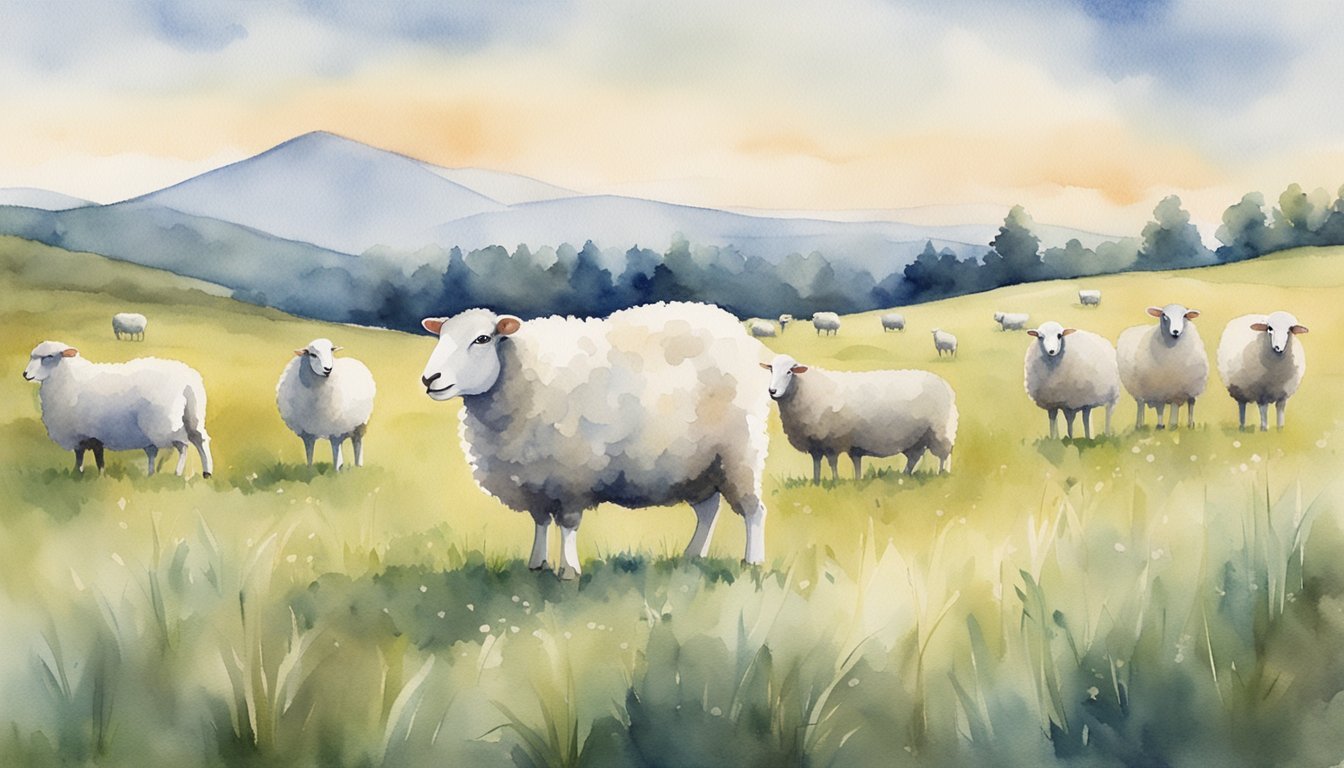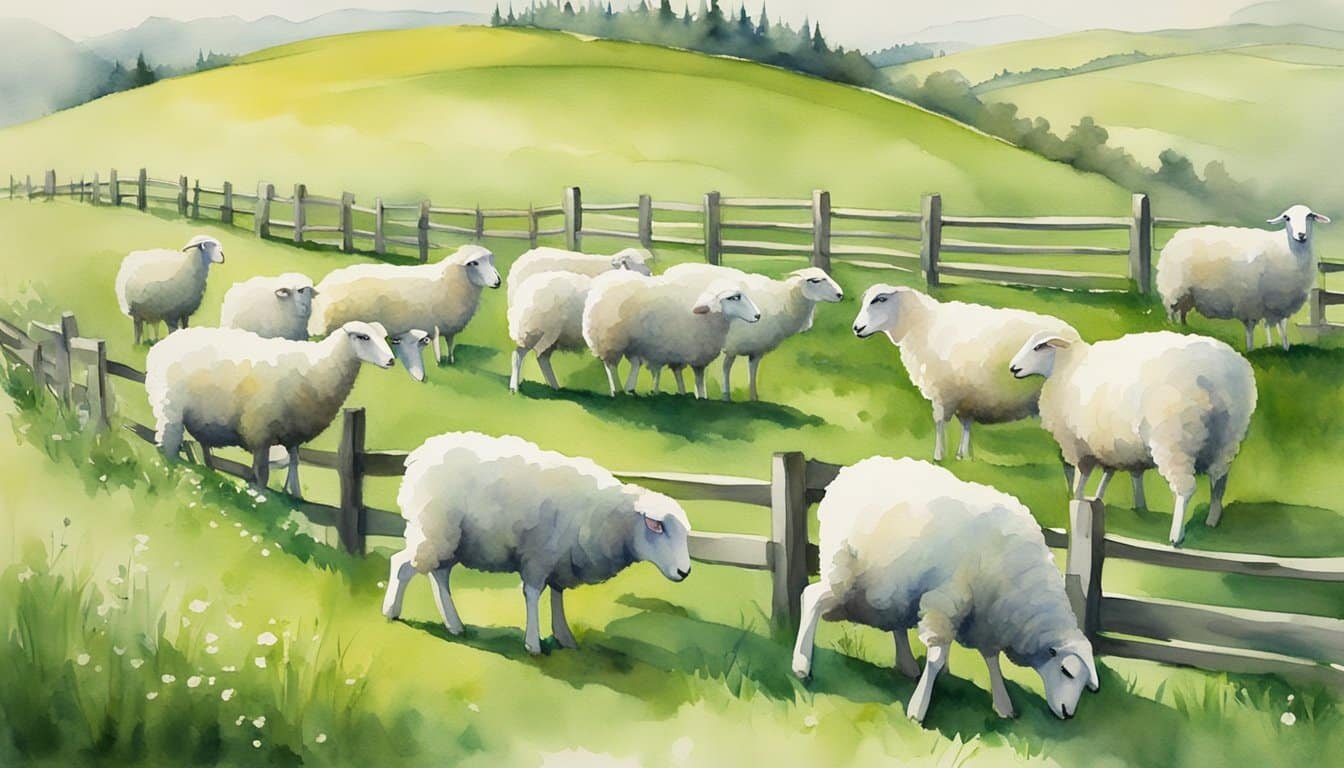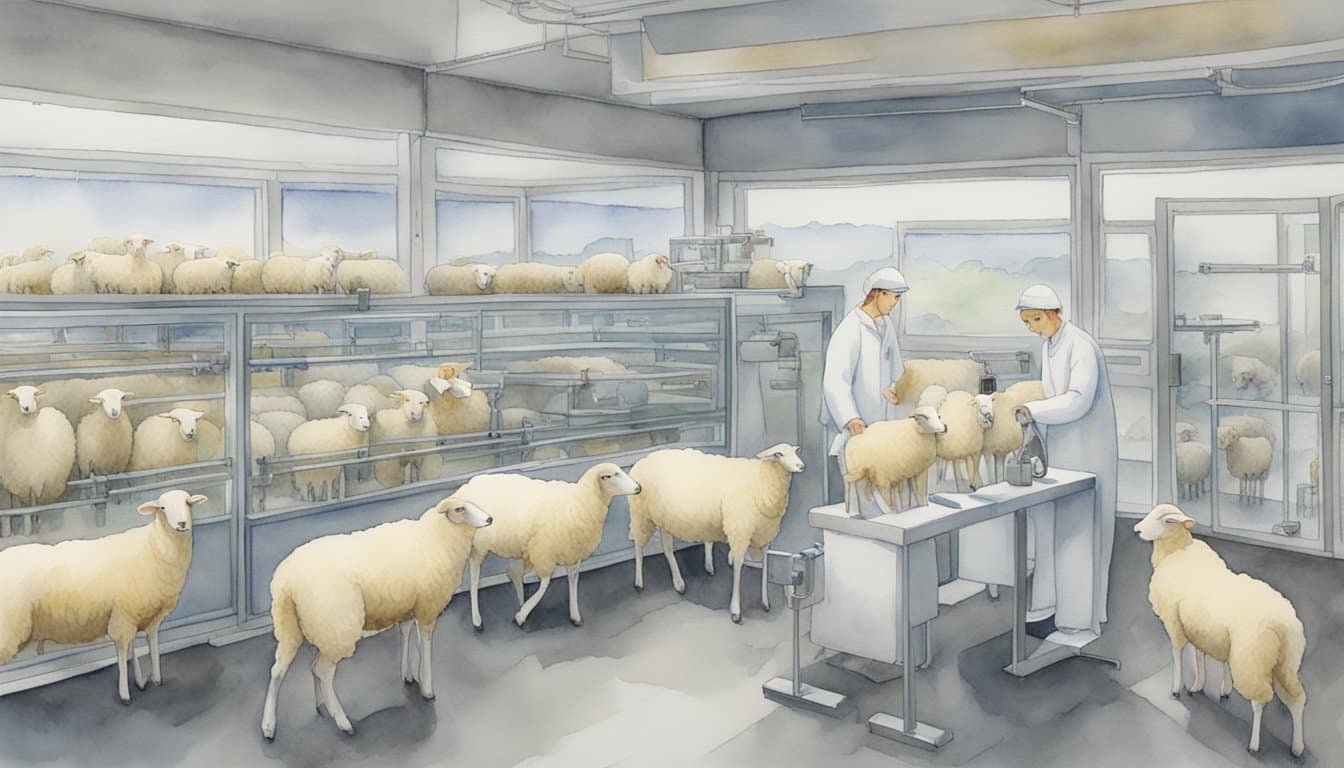Cloning Basics
Cloning, in the context of biological reproduction, is the process of creating genetically identical copies of an organism. When scientists talk about cloned sheep, they’re referring to sheep produced by a technique known as somatic cell nuclear transfer (SCNT). This is where the nucleus of an adult somatic cell—basically any cell from the body that’s not a sperm or egg cell—is transferred into an egg from which the nucleus has been removed.
Here’s how it works in simple steps:
- Remove the nucleus from an egg cell.
- Insert the nucleus from an adult somatic cell into that egg.
- Stimulate this new cell to begin dividing and developing into an embryo.
- Implant the developing embryo into a surrogate mother.
This technique creates a new individual with DNA identical to the donor of the adult somatic cell, which could be any tissue cell, like skin or muscle. The first successful instance involving a mammal created Dolly, the famous sheep.
In cloning research, embryonic stem cells and induced pluripotent stem cells (iPS cells) hold potential for creating tissues or organs for transplantation. While embryonic stem cells are derived from the embryo itself, scientists can reprogram adult cells into iPS cells, which have the ability to differentiate into nearly any cell type.
In various research centers, scientists continue to study these techniques, not just for the sake of cloning animals like sheep, but also to understand the deeper intricacies of DNA, stem cells, and to advance medical therapies. Cloning remains a fascinating yet ethically complex field that straddles the realms of science, medicine, and even philosophy.
Dolly the Sheep

Dolly made history as the first sheep to be cloned from an adult mammal’s mammary gland cell, marking a spectacular moment at the Roslin Institute, near the University of Edinburgh. Professors Ian Wilmut and Keith Campbell led the pioneering work, culminating in Dolly’s birth on July 5, 1996. Dolly’s creation from an adult cell proved that specialized cells could be used to create an exact genetic replica – a real game-changer in biotechnology.
- Birth Date: July 5, 1996
- Place: Roslin Institute, Scotland
- Creators: Ian Wilmut and Keith Campbell
The process of cloning Dolly involved transferring the nucleus from a mammary gland cell into an egg cell that had its nucleus removed. This egg then developed into an embryo, which was implanted into a surrogate sheep. Dolly’s arrival was met with amazement yet stirred up ethical debates and questions about the future of cloning in mammals, including pigs, horses, primates, and the impetus for similar research in other animals.
Although Dolly lived a normal life for a sheep, her existence meant a lot more for science. She paved the way for discussions on the therapeutic potential of cloning and raised questions about the complexities of cloning patents. Dolly’s significance to science is underscored by her place at the National Museum of Scotland, where she continues to capture the public’s curiosity.
- Cloning Method: Somatic Cell Nuclear Transfer (SCNT)
- Significance: First mammal cloned from an adult somatic cell
Dolly’s legacy lives on today, influencing the field of genetics, regenerative medicine, and the ongoing discussion about the ethical dimensions of cloning technology.
Ethics and Impact

When delving into the topic of cloned sheep, it becomes clear that ethical considerations and the wide-ranging impacts are at the forefront of discussions. These concerns touch on the realms of science, medicine, and societal norms, extending from the development of treatments for human diseases to the preservation of biodiversity.
Ethical Considerations
The conversation about ethical considerations in animal cloning, specifically in producing creatures like Dolly the sheep, often centers around the welfare of cloned animals and the implications of extending these techniques to human cloning. The argument hinges on the principles of respect for life and concerns over the potential commoditization of living beings. For example, stem cell research, which has benefitted from cloning technology, treads a cautious path between groundbreaking medical advances and ethical considerations, particularly in manipulating embryonic material that could potentially develop into a human.
Impact on Science and Medicine
Cloning’s impact on science and medicine is significant. Techniques developed from cloning research can lead to advancements in understanding and treating various diseases, including cancer and lung disease. Further, the promise of cloning lies in the potential to replicate cells, tissues, or organs for transplantation, which could revolutionize the way we approach human disease and organ failure.
Legal and Societal Repercussions
As for the legal and societal repercussions, cloning, especially of humans, conjures a host of regulatory challenges. The European Parliament, for instance, has been instrumental in crafting laws that navigate the complex moral terrain. The cloning of animals has sparked debates on food safety and environmental ethics, especially when considering the introduction of cloned animals into the food supply. Furthermore, cloning technology poses questions about the conservation of endangered species and the potential resurrection of extinct species, both of which carry complex implications for biodiversity and ecosystem dynamics.
Advanced Applications

Sheep cloning has stretched beyond basic research into practical fields that could revolutionize how we handle conservation, medicine, and agriculture. Pioneering these areas, cloned sheep are on the vanguard, promising to be a cornerstone of biotechnological progress.
Conservation and Revival
Conservation efforts for endangered species like the giant panda have been empowered by cloning technology. Using cloned sheep techniques, scientists aspire to preserve biodiversity through embryonic cells that can renew genetic diversity. As for the goal of reviving extinct species, cloning brings the possibility of bringing back animals like the woolly mammoth closer to reality. Entities like Sooam Biotech play a pivotal role in these endeavors, working on the frontier of species revival.
Medical Advancements
In the medical world, cloning has opened the door to significant breakthroughs. Dolly Parton, notable for sharing a name with the first cloned sheep, “Dolly,” symbolizes the connection between cloning and health since PPL Therapeutics cloned Dolly to advance drug production. Cloned sheep are instrumental for studying complex human diseases, allowing researchers to scrutinize genetic errors and hibernation patterns that could lead to medical innovation.
Agricultural and Commercial
The use of cloning in agriculture isn’t just about multiplying stock – it’s about enhancing it. By making a clone from an adult cell of a prime specimen, farmers can produce herds of sheep with optimal traits. This leads to more efficient meat and wool production, reinforcing the role of cloned animals in a growing commercial landscape. Moreover, cloned sheep act as surrogate mothers, carrying embryos to term, including those that have been genetically modified to exhibit desirable agricultural characteristics.
Technology and Methodology

The arena of sheep cloning has been revolutionized by the advent of somatic cell nuclear transfer (SCNT) and a variety of innovative cloning techniques. These advancements not only allow for the replication of genetically identical animals but also open new avenues for the future of cloning technology, including medical research and preserving endangered species.
Somatic Cell Nuclear Transfer
Somatic cell nuclear transfer (SCNT) is a method where the nucleus, containing DNA, from an adult somatic cell is transferred into an oocyte (egg cell) that has had its own nucleus removed. This process has been instrumental in cloning animals, with the most famous clone being Dolly the sheep, and underpins most modern mammalian cloning.
- Nuclear Transfer Stages:
- Removal of nucleus from the oocyte.
- Introduction of nucleus from the adult somatic cell.
- Fusion and activation of the hybrid cell to initiate development in embryo form.
Cloning Techniques
A myriad of cloning techniques have been refined since Dolly, including “Handmade Cloning” which simplifies the traditional SCNT method, potentially reducing cost and increasing efficiency. Each technique utilizes the crucial step of transferring a donor nucleus into an enucleated oocyte.
- Techniques Include:
- Handmade Cloning (HMC)
- Reverse-Order Zona-Free Cloning
Research centers continue to explore and develop these methods, aiming to enhance the success rates of viable offspring. An example of innovative cloning approaches is the production of transgenic sheep rich in omega-3 fatty acids through advanced cloning techniques, showing the potential for beneficial genetic modifications.
Future of Cloning Technology
The future of cloning technology looks bright, with potential leaps forward in fields ranging from agriculture to medicine. Ongoing research is enhancing the efficiency of SCNT, potentially leading to new therapies based on embryonic stem cells.
Key Aspects:
- Genetic preservation of endangered species.
- Improvements in agricultural animal quality.
- Potential medical breakthroughs involving tissue regeneration.
Recognition for cloning’s potential was underscored when the development of SCNT earned the scientists involved a Nobel Prize, indicating the considerable impact of this technology on science and society.

